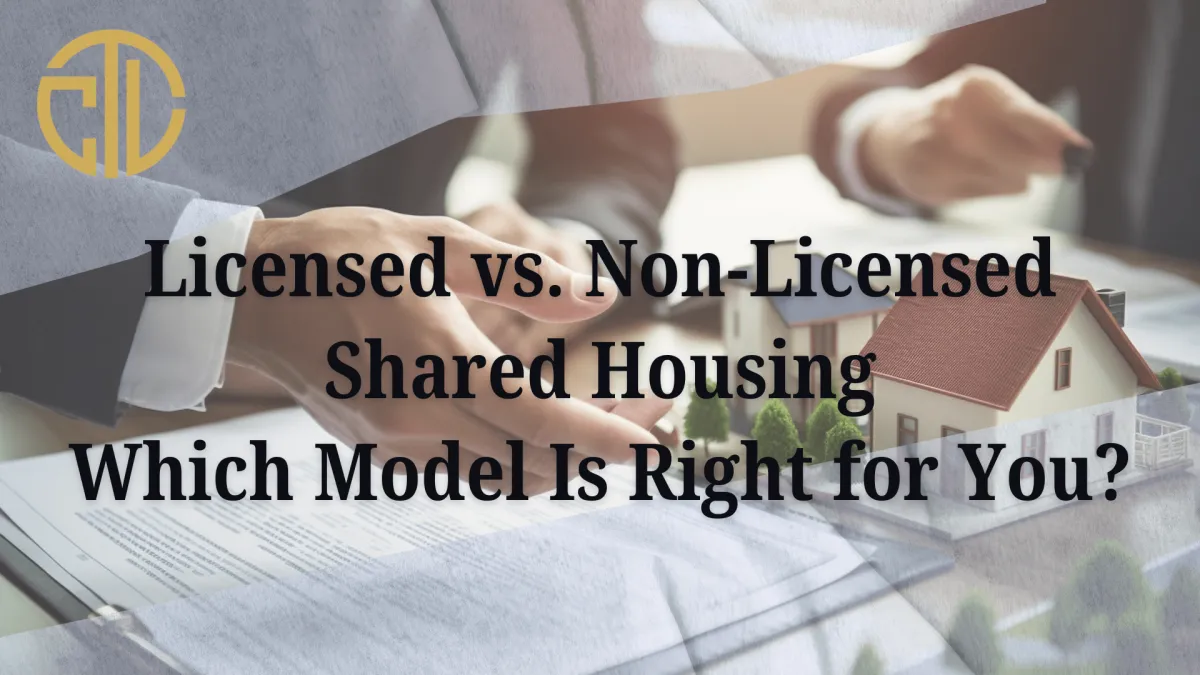
Understanding Licensed vs. Non-Licensed Shared Housing
Licensing vs. Non-Licensed Shared Housing: Which Is Right for You?
When launching a shared housing business, one of the first questions you’ll face is:
Should I go licensed or stay non-licensed?
The answer depends on your target population, service model, funding goals, and your tolerance for regulation.
In this guide, we’ll break down the pros, cons, and use cases for both licensed and non-licensed shared housing — so you can move forward with clarity, confidence, and a model that’s built for scale.
Join the Challenge to get step-by-step guidance on launching your first home, with or without a license.
Understanding the Two Paths
What Is Licensed Shared Housing?
Licensed homes meet specific regulatory requirements laid out by your state’s health or human services department. These homes often:
Serve vulnerable or high-needs populations (e.g. seniors, behavioral health clients)
Offer daily living assistance, sometimes medical support
Require background checks, inspections, staff training, and documentation
Can accept Medicaid or insurance reimbursements
What Is Non-Licensed Shared Housing?
These homes typically serve individuals who don’t need medical care — just a safe, stable place to live. Common in:
Transitional housing for reentry or recovery
Affordable housing for seniors, veterans, or low-income individuals
Faith-based or mission-driven homes
These operate under zoning laws and occupancy codes, but often without state-level licensure.
When to Choose a Licensed Model
You should consider getting licensed if:
You want to serve residents who need medical or personal care
You plan to bill Medicaid or work with state agencies
You have the capital and patience to navigate inspections and regulations
You're creating a long-term care environment (e.g. assisted living, adult foster care)
Licensing offers credibility and access to institutional funding, but requires serious commitment to operational standards.
When to Choose a Non-Licensed Model
A non-licensed model may be ideal if:
You're starting with limited capital and want to launch quickly
You want more control and flexibility
You're targeting independent but underserved populations
You’re offering supportive housing, not medical care
This is often the fastest and simplest path to cash flow and scalability — especially when building a shared housing portfolio.
The Expansion Angle: Can You Do Both?
Yes — many successful operators start non-licensed and transition into licensed homes later.
This approach allows you to:
Prove your model and fill beds first
Build cash flow before investing in licensing
Choose which properties (or populations) warrant licensure
Some entrepreneurs even run hybrid portfolios: licensed homes for care-intensive residents, and non-licensed homes for independent tenants.
Build Authority the Smart Way
Whether you choose licensed or non-licensed housing, your systems and leadership define your success.
To scale and stand out in your market:
Document your systems and train others
Create relationships with referral sources
Build a recognizable brand of care, trust, and consistency
Consider licensing your method to others once you're established
Expansion isn’t just about owning more houses — it’s about building a repeatable, trusted model that creates real results for people in need.
Join the Challenge — Launch Your First Home with Confidence
Want help deciding which model is right for you? Ready to launch your first property the smart way?
Our “Start Your Senior Living Business” Challenge walks you through:
Which model fits your mission and budget
How to find your first property
Systems, paperwork, pricing, and occupancy
How to scale beyond just one home
Click here to join the Challenge now
This is how you stop overthinking and start changing lives.
